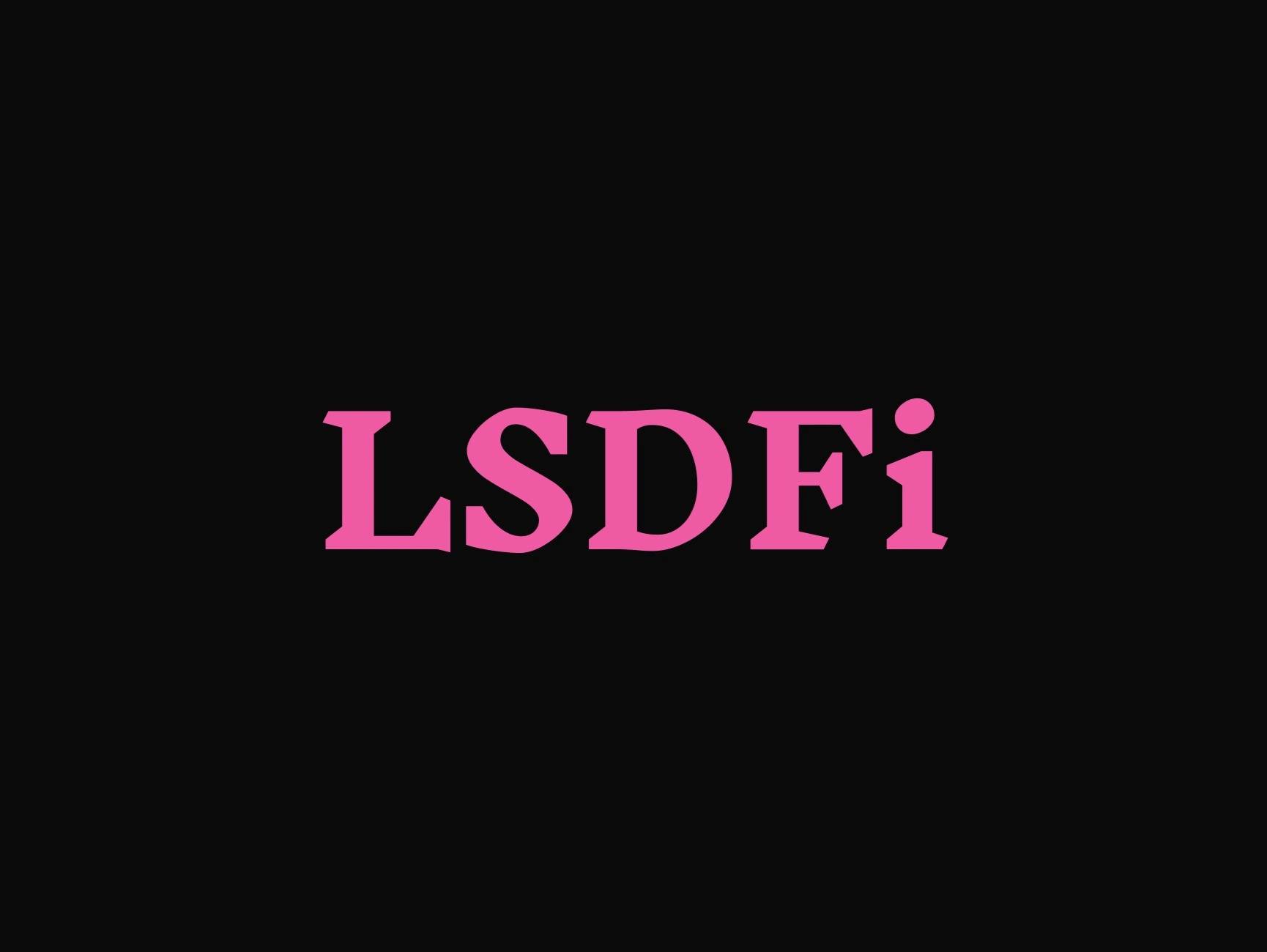订阅 wiki
Share wiki
Bookmark
LSDFi
LSDFi
LSDFi,即流动性质押**衍生品金融,**是去中心化金融 (DeFi) 中的一个领域,专注于利用质押资产的流动性。它旨在提高资本效率,并为已经质押其加密货币的用户创造额外的收益机会。[1][3]
概述
LSDFi 代表了去中心化金融生态系统中的一次进化,它建立在流动性质押的概念之上。
流动性质押允许用户质押其权益证明 (PoS) 加密货币,例如以太坊 (ETH),以赚取质押奖励,同时获得代表其质押头寸和应计奖励的流动性代币 [1]。
这些流动性质押衍生品 (LSD) 或流动性质押代币 (LST) 可以用于其他 DeFi 协议,这与通常被锁定且缺乏流动性的原生质押资产不同 [1]。
LSDFi 的核心创新在于其能够以多种方式同时提高质押资本的生产力。在传统金融 (TradFi) 中,储蓄账户中的资金等资产可以赚取利息,但如果不提取,则无法轻松地在其他地方用作抵押品或用于进一步投资 [1]。
LSDFi 由智能合约驱动,允许用户在其基础资产上赚取质押收益,同时将流动性衍生代币部署在各种 DeFi 应用中,例如借贷协议、收益耕作策略或作为贷款的抵押品 [1]。这种可组合性和灵活性是与传统金融系统的重要区别。
LSDFi 的发展与以太坊等主要区块链向权益证明共识机制的过渡密切相关 [1]。这种过渡创造了大量的质押资产池,流动性质押协议应运而生,以解决这些质押头寸的流动性问题。然后,LSDFi 协议建立在这些流动性质押解决方案之上,以创建更多的金融应用和使用流动性衍生品的收益生成策略。[4]
工作原理
LSDFi 通过利用流动性质押协议发行的流动性质押衍生品 (LSD) 或流动性质押代币 (LST) 运作。
- 质押基础资产: 用户将其原生 PoS 加密货币(例如 ETH)质押到流动性质押协议中。这种质押有助于区块链网络的安全和运行 [1]。
- 发行流动性衍生品: 流动性质押协议向用户发行代币 (LSD/LST),代表其质押的本金加上任何应计质押奖励。例如,Lido 的 stETH 或 Rocket Pool 的 rETH [1]。这些代币通常是可替代且可转让的。
- 在 DeFi 中部署: 然后,用户可以将发行的 LSD/LST 用于其他去中心化金融协议中。这可能涉及:
此过程允许用户赚取底层资产的基础质押收益,同时从其他 DeFi 应用程序中的流动性衍生代币中赚取额外收益或获得效用。底层机制严重依赖智能合约,智能合约可自动执行 DeFi 生态系统中 LSD 的质押、发行和后续交互 [1]。
主要特点
LSDFi 的特点在于其在更广泛的 DeFi 领域中的几个关键特征:
- 资本效率: 通过允许质押资产通过 LSD 同时用于多个 DeFi 协议,与传统质押(资产被锁定)相比,LSDFi 显著提高了资本效率 [1]。
- 流动性: LSD 为原本缺乏流动性的质押资产提供流动性,使用户无需取消质押即可获得其质押头寸的价值 [1]。
- 可组合性: LSD 被设计为模块化金融基元,可以轻松集成到不同的 DeFi 协议中使用,从而创建复杂的收益策略 [1]。
- 收益生成: LSDFi 协议提供各种策略,在基本质押奖励之上产生额外收益,通常通过借贷和流动性提供来实现 [2]。
- 互操作性: 虽然主要集中在以太坊等特定区块链生态系统中,但该概念扩展到其他 PoS 链,一些协议旨在实现跨链流动性质押和 LSDFi 应用 [1]。
- 透明度: 交易和协议逻辑通常记录在公共区块链上,从而在资产流动和协议操作方面提供一定程度的透明度 [1]。
用例
LSDFi 在去中心化金融生态系统中实现了多种用例:
- 借贷: 用户可以存入 LSD 作为抵押品来借入其他加密货币、稳定币,甚至更多的基础资产,从而实现杠杆质押头寸 [1]。
- 流动性挖矿: LSD 可以存入去中心化交易所 (DEX) 或其他流动性挖矿协议上的流动性池中,以赚取交易费用和/或额外的代币奖励 [1]。
- 稳定币铸造: 一些协议允许用户锁定 LSD 以铸造稳定币,从而在仍然获得基础资产质押收益的同时,获得稳定的价值 [1]。例如,在 Lybra Finance 中锁定 ETH 可以铸造 eUSD 稳定币,可能产生 6% 到 7% 的 APY [1]。
- 收益聚合: 存在一些协议,可以聚合各种 LSD,并自动将它们分配到不同的收益生成策略中,以优化用户的回报 [1]。Yearn Finance 的 yETH 代币就是一个例子,它结合了多个 LST,其 APR 与 Lido 等大型协议相当 [1]。
- 交易和兑换: LSD 可以在去中心化和中心化交易所进行交易,为质押头寸提供退出流动性选择 [1]。
协议和生态系统
LSDFi 活动主要集中在使用权益证明(Proof-of-Stake)并已建立流动性质押解决方案的区块链生态系统中。
- 以太坊生态系统: 以太坊是 LSDFi 的主要中心,因为在合并后其质押的 ETH 供应量很大。
- 流动性质押协议: Lido 是以太坊上重要的流动性质押协议,发行 stETH [1]。截至 2025 年 5 月,Lido 的总锁定价值(TVL)为 221.8 亿美元 [1]。Rocket Pool 是另一个发行 rETH 的协议,TVL 为 16 亿美元 [1]。币安 质押的 ETH 也占了很大一部分,TVL 为 54 亿美元 [1]。这些协议通常为质押的 ETH 提供 2.4% 至 2.7% 的年化收益率(APR)[1]。
- LSDFi 协议: Yearn Finance 等协议集成了多个 LST,以提供聚合收益策略 [1]。Lybra Finance 允许根据质押的 ETH 铸造稳定币 [1]。Amplified Protocol 旨在根据不断变化的流动性条件集成各种 LST [1]。
- Solana 生态系统: Solana 是另一个 PoS 链,拥有正在开发的 LSDFi 生态系统。
- 多链协议: 一些协议旨在跨多个区块链网络提供流动性质押和 LSDFi 机会。Meta Pool 例如,支持跨 8 个以上链的流动质押,截至 2025 年 5 月,TVL 为 8940 万美元 [1]。
与传统金融的比较
LSDFi 呈现出与传统金融工具不同的范式。虽然 TradFi 拥有现金、贷款、债券、股票和衍生品等基本要素,但这些通常是单一用途且相互隔离的 [1]。TradFi 中的衍生品,如总回报互换或期权,通常是为特定目的而构建的,并且缺乏 DeFi 中固有的可组合性 [1]。
相比之下,LSDFi 利用智能合约和区块链技术的可编程性来创建流动性质押衍生品,这些衍生品可以作为模块化的、可插拔的金融构建块 [1]。这使得 LSD 可以在不同的 DeFi 协议之间自由移动,使用户能够叠加收益并同时以各种方式利用其质押资本 [1]。传统金融中最接近的平行例子是储蓄账户,它允许赚取利息,但限制了存款人同时在其他地方使用存款资本 [1]。
根据 The Tokenist 的主编 Shane Neagle 的说法,LSDFi 是传统金融在其当前框架内无法复制的金融创新的一个明显例子 [1]。他指出,互操作性、透明度和智能合约带来的资本效率的结合使这成为可能。
挑战
尽管 LSDFi 具有潜力,但也面临挑战。对于许多用户来说,驾驭多个协议和策略的复杂性是一个障碍 [1]。生态系统涉及各种流动性质押平台,这些平台发行不同类型的 LSD,这增加了一层复杂性 [1]。此外,与多个 DeFi 协议交互会带来各种风险,包括智能合约风险、借贷协议中的清算风险以及 LSD 相对于其基础资产的潜在脱钩风险 [1]。
Shane Neagle 认为,为了实现大规模采用,需要推动“DeFi 2.0”,以简化流程并充分利用 LSD 的潜力 [1]。他还指出,DeFi 中最强大的工具(包括 LSDFi 中的工具)通常最难访问,需要时间、技术熟练程度和对风险的高度容忍度 [1]。
发现错误了吗?
